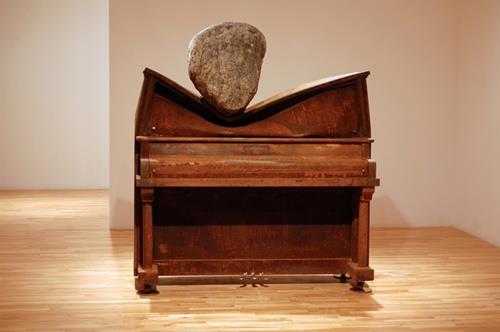

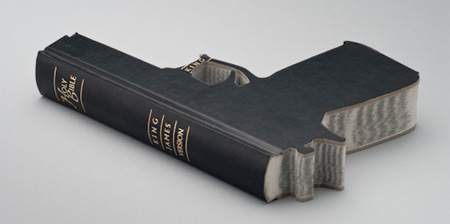



QUBIT AI: Michael Sadowski (aka derealizer)
Magic Drops
FILE 2024 | Interator – Sound Synthetics
International Electronic Language Festival
Michael Sadowski (aka derealizer) – Magic Drops – Austria
Moving abstract structures and grimacing masks, colors that change and pulse to the rhythm of the music create a psychedelic experience that embodies the spirit of Techno.
Bio
Using Stable Diffusion, a visual synthesizer, the artist turns fantasies into videos using just a PC, similar to the invention of printing 600 years ago. Exploring the interplay between software algorithms that create visual worlds and the artist’s mind guiding this process is incredibly exciting. Unlike traditional cinema, there is no ‘reality’ or humans involved, making it a satisfying medium for creating visual art.
Credits
Music: Chris Robert

Juri Hwang
Somatic Echo
“Somatic Echo” is an experimental sound art and research project that utilizes bone conducted sound as a method to investigate human audition and create an unusual and mesmerizing aesthetic of the body as a medium of sound. The installation uses a reclining chair and a sound mask to play an 8-channel sound composition through 8 transducers placed on the user’s head: 6 channels in the face and 2 in the back of the head. The transducers transmit sound through the bone structure of the skull directly to the listener’s inner ear, bypassing the outer ears, which normally are the gateway for auditory signals. The listeners experience the soundscape through both their auditory and tactile senses perceiving a sonic image shaped by the sound traveling through the head structure and through vibrations applied to the skin. This set up lets us experience sound through our body and our body through sound.

Filippo Nassetti and Vincenzo Reale
Thalassic Masks
The Thalassic Masks project focuses on rethinking the protective mask, transforming a medical product, born in a state of emergency, into a design statement expressing contemporary identities.

Jordan Wolfson
요르단 울프슨
ジョーダンウォルフソン
Female Figure
The stare of the animatronic sculpture is so intense, it would put anyone uncomfortable. The mask is probably there as a way to avoid creating a human face using animatronics but it also definitely adds to the creepiness of the overall look. The importance of the gaze is found throughout Wolfson’s work but it finds here a very special interpretation. He gives the ability to gaze to two different entities, a stripper and a robot, who are by definition never supposed to look up. The visitor is no longer in control of the situation, creating the awkwardness that is at the core of the work.
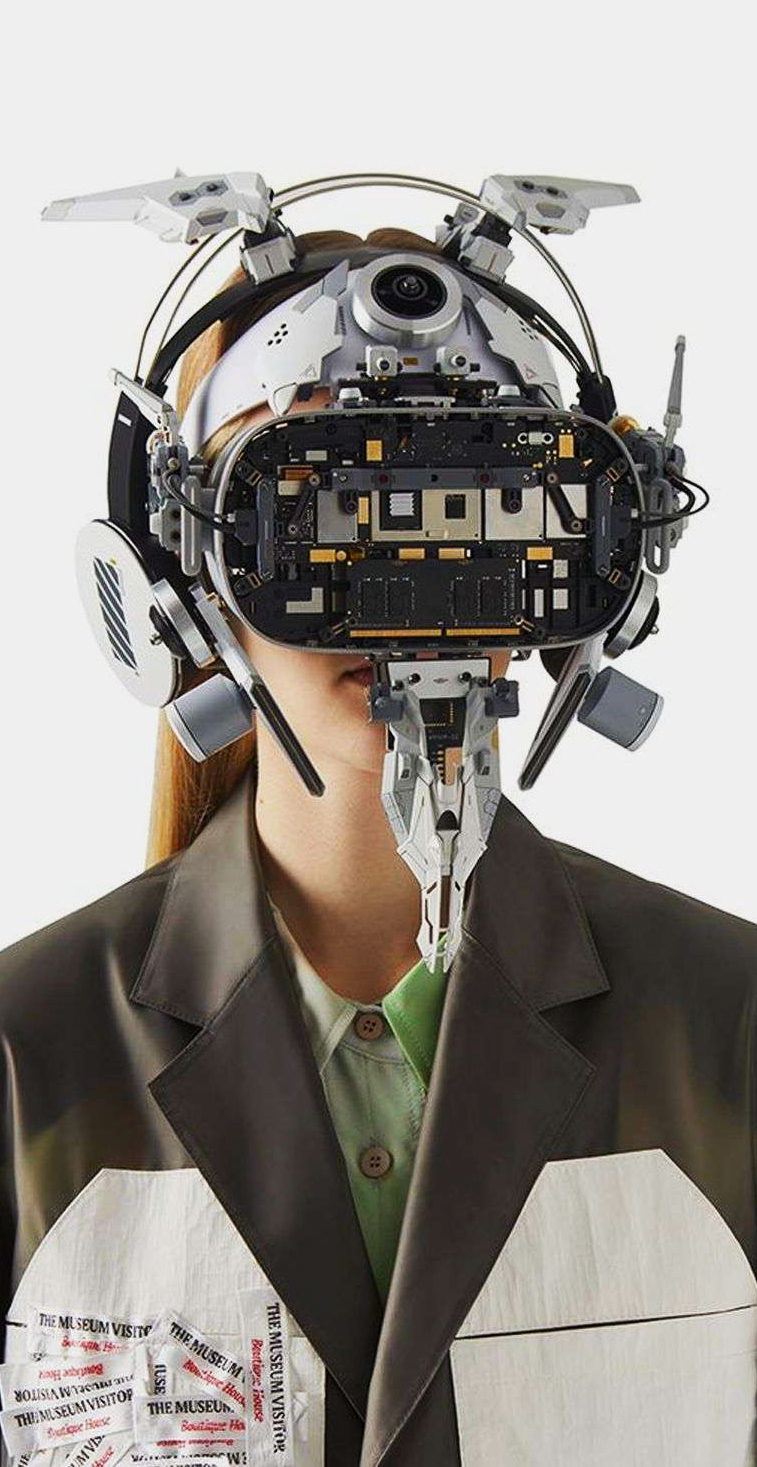
HIROTO IKEUCHI
MPS-15SK “MULTI” EXOSKELETON
Hiroto Ikeuchi kreiert die dystopisch anmutende Version der allseits bekannten Luftkapseln oder der Masken, an die wir uns unbestreitbar gewöhnt haben. Ikeuchi ist ein japanischer Künstler, Designer und Modellbauer mit Sitz in Tokio und weltweit bekannt für seine futuristischen Hightech-Designs, modernen Accessoires und Roboterfiguren, die unser rudimentäres Verständnis von elektronischen oder computergestützten Geräten erschüttern.

INES ALPHA
antivirus mask and 3d makeups
“She tries to fantasize what complete aesthetic freedom of one’s appearance would look like. Her goal is to encourage a fun and creative approach to make up and self expression. By completely thrashing all preconceptions of what make-up is and how it’s used, Ines collaborates with various artists, musicians and models to produce her own fantastical versions of reality“. Teo Sandigliano

SUGURU GOTO
netBody: Cuerpo aumentado y cuerpo virtual II
En “netBody: Augmented Body and Virtual Body II” conectamos el mundo real con la realidad online de Second Life a nivel físico: los movimientos corporales de una persona en el mundo real controlan un avatar en Second Life, mientras que los movimientos de un avatar controlar a una persona para liderar. Un avatar de Second Life se convierte en un medio de conectar físicamente al individuo con la sociedad. Esto podría permitir que personas de todo el mundo con el hardware adecuado se comuniquen entre sí a través de Internet. Jugamos con nuestra percepción del cuerpo de un individuo como su identidad.
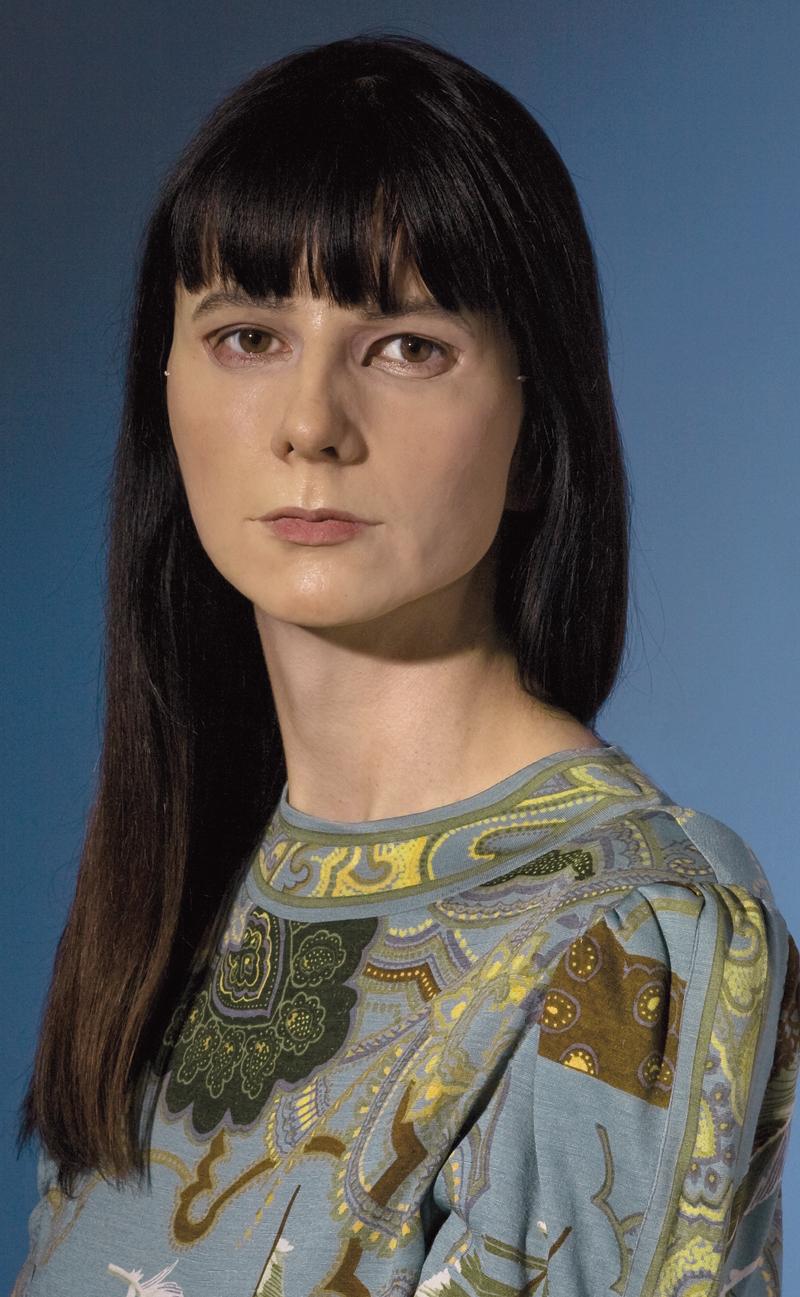
gillian wearing
masks
Los autorretratos de Wearing exploran la fotografía como farsa, además de examinar concepto de identidad y representación. Con una meticulosa atención al detalle y sofisticadas prótesis de silicona, Wearing crea extraordinarios autorretratos que imitan fotos de su álbum de familia. Estas imágenes triunfan porque formulan preguntas sobre la familia, las relaciones y el yo, aspectos todos ellos importantes en la fotografía contemporánea. Otros retratos de la serie, incluyen a su hermano, su abuela y su abuelo.

Mat Collishaw
The mask of youth
The eyes of the latest portrait of Queen Elizabeth I follow you around the room. No, they really do. Mat Collishaw’s hyperrealistic mask of the Tudor queen comes to life, whirring and grimacing, to shock visitors in the shadowy former royal chambers of the Queen’s House. As the days darken, the effect will get spookier. The Virgin Queen’s dark eyes dart around nervously. Her mouth opens as if to speak but she cannot find the words. She is dazed by a future she can’t comprehend, a robot ghost staring in horror and doubt at her own painted image – Collishaw’s undead death mask has her eyes fixed on the Armada Portrait, painted in 1588 and a treasure of the Queen’s House after being meticulously restored.
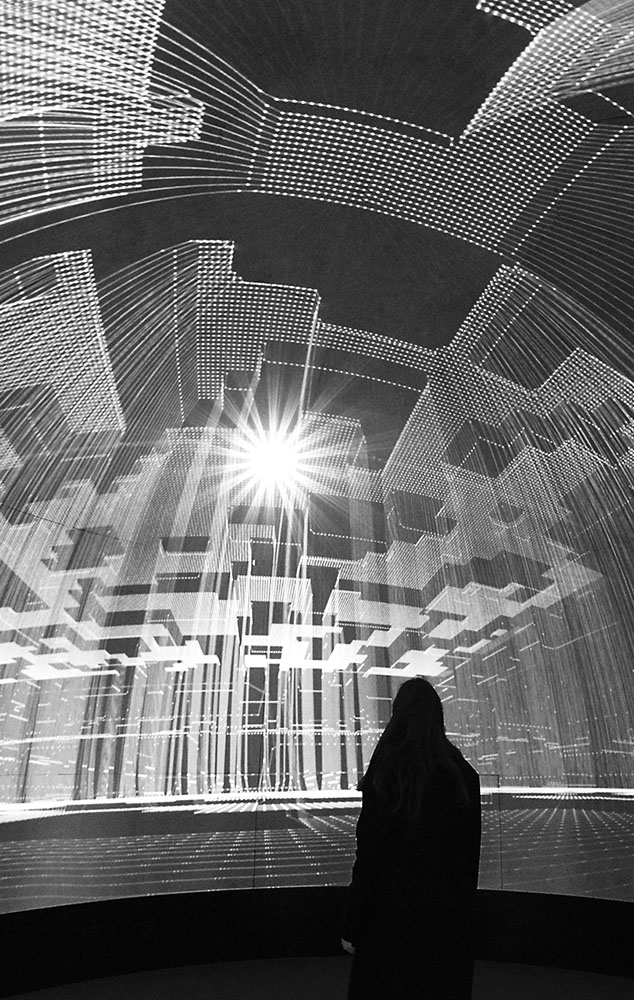
MONOCOLOR
Latent Space
In Latent Space fine lines weave virtual spaces around the viewers. The architecture that manifests is highly fragile — the space grows, shrinks, collapses. The acoustic dimension is also deeply spatial — slowly morphing soundscapes float around the dome, enveloping the observers in sound and image. The omnipresence of the virtual realm is transposed into the physical space of the dome to unmask the often proclaimed boundlessness of digital space. The work tests and investigates the spatial effects of the dome, which serves as a metaphor for the virtual net that always surrounds us.

jip van leeuwenstein
surveillance exclusion
Camera’s and other technologies create a safer living environment than ever before. Mega databanks and high resolution cameras stock hundreds of exabytes a year. But who has access to this data? Not only the security department but also the advertisement industry is interested in this technology. They pay to use real time data to their advantage. They create advertisements that call your name, keep records of your personal interests and they follow you everywhere you go. By wearing this mask formed like a lens it possible to become unrecognizable for facial recognition software and because of it’s transparence you will not lose your identity and facial expressions. So it’s still possible to interact with the people around you.

JANNIS MARKOPOULOS
ДЖЕННИС МАРКОПУЛОС
Cartoon Skull Mask
“The mask is an object worn over or in front of the face of a skull to hide the identity of it and by its own features to establish a part of a cartoon being. This essential characteristic of hiding and revealing personalities or moods is common to all masks. As cultural objects they have been used throughout the world in all periods and have been as varied in appearance as in their use and symbolism.
The wearer of the cartoon mask is considered to be in direct association with the spirit force of the mask and is consequently exposed to personal danger of being affected by it.The wearer of the cartoon mask is a skull and the person behind to the skull is not under the living persons.The ironic combination of two inappropriate items is to the stoic thinking to owe.”

CHIU CHIH
Voyage on the Planet
Designer Chiu Chih imagines a possible future where our cities have fallen into disrepair and the air is poisoned. In this wasteland, a woman wanders through the rubble, breathing with the help of a companion plant. The project, titled “Voyage on the planet,” consists of a clear box worn like a backpack. Two breathing tubes connect a face mask to the box. Inside, the box holds a potted plant, acting like a portable filter.

Neri Oxman
Neri Oxman: Material Ecology
Vespers
“Vespers is a collection of 15 3-D-printed masks that explore the idea of designing with live biological materials. The collection consists of three distinct series, each reinterpreting the concept of the death mask—traditionally a wax or plaster impression of a corpse’s face. Taken as a whole, the three series form a narrative arc from death to rebirth. In the first series, Oxman and The Mediated Matter Group looked at the death mask as a cultural artifact. Fabricated using an algorithm that deconstructed polyhedral meshes into subdivided surfaces, the masks were 3-D printed with photopolymers, as well as with bismuth, silver, and gold, and rendered in color combinations that recur in religious practices around the world.” Rachel Morón


AES+F
Inverso Mundus
The title of the work, Inverso – both an Italian “reverse, the opposite” and the Old Italian “poetry,” and Mundus – the Latin “world,” hints at a reinterpretation of reality, a poetic vision. In our interpretation, the absurdist scenes from the medieval carnival appear as episodes of contemporary life in a multichannel video installation. Characters act out scenes of absurd social utopias and exchange masks, morphing from beggars to rich men, from policemen to thieves. Metrosexual street-cleaners are showering the city with refuse. Female inquisitors torture men on IKEA-style structures. Children and seniors are fighting in a kickboxing match. Inverso Mundus is a world where chimeras are pets and the Apocalypse is entertainment.
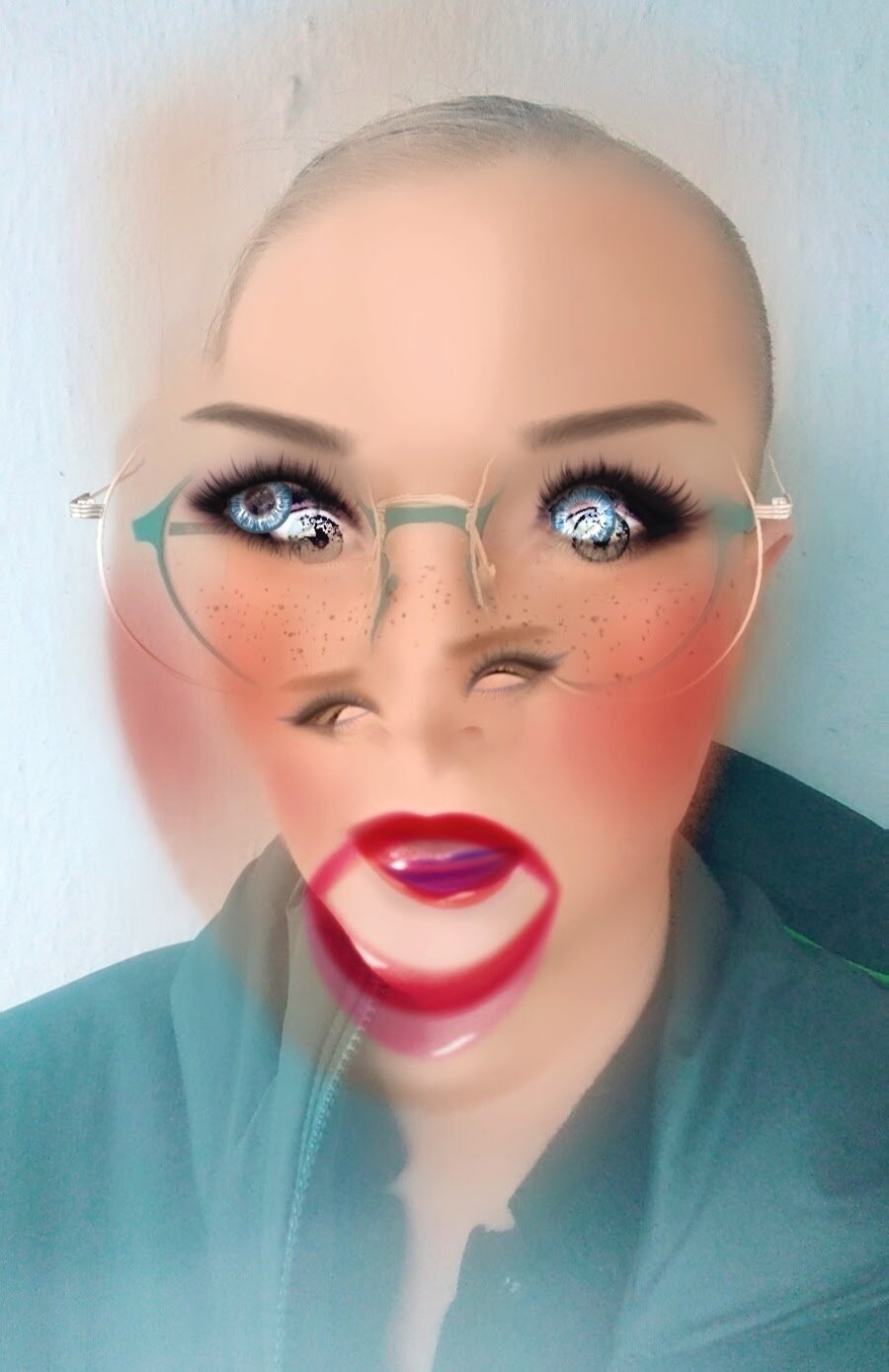
M. Eifler
The Masking Machine
Using a custom wearable computer I can walk around any space wearing the still images now animated by my facial expressions. When seen through the screen hovering in front of my face I wear the images like an avatar, but unlike with the stills on a wall or images online I can reach out from behind the screen to shake hands and talk with viewers.



Sidi Larbi Cherkaoui / Yabin Studio & Eastman
Genesi
Figures in white coats wearing masks over their mouths, observing and conducting tests on other people. Between them stand glass cages suggestive of gigantic test tubes. GENESIS生长, as the title suggests, is a show about the origins of things. We are born and then we die, and in the meantime we undergo constant testing and increasing estrangement from the natural world.

SRULI RECHT
Masked – In Flight
“Masked in Flight” is a project by Iceland’s Sruli Recht that studies what kind of masks air travelers might wear — travelers that wanted to look like serial killers and creepy stormtroopers, that is. Would you feel comfortable on a plane with the person next to you wearing something like this?
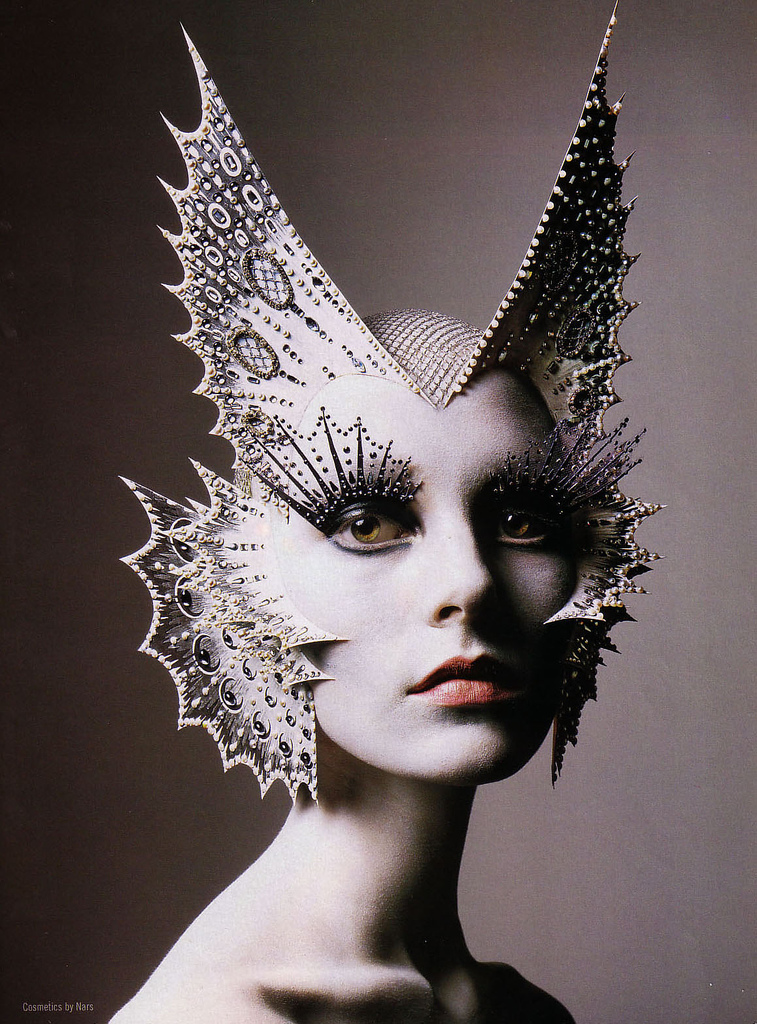
RICHARD BURBRIDGE
Ричард Барбридж
リチャードバーブリッジ
리처드 버 브리지
ريتشارد بيربريدج
masks
Richard Burbridge, an influential British fashion photographer. Unfortunately any biographical info on him was impossible to find, but guessing by some of his early work, he has been a staple of the fashion industry for some time now. He is an absolute genius with lighting, and whether it’s commercial or editorial, we love all of his work. Richard Burbridge was part of 90s fashion bible i-D, and shot some of my favourite covers for the magazine from 1999 to mid-2000s, has also brought his hyper technical lighting and perfectionism to The New York Times T Magazine, V Magazine and Italian Vogue. He is represented by Art + Commerce.


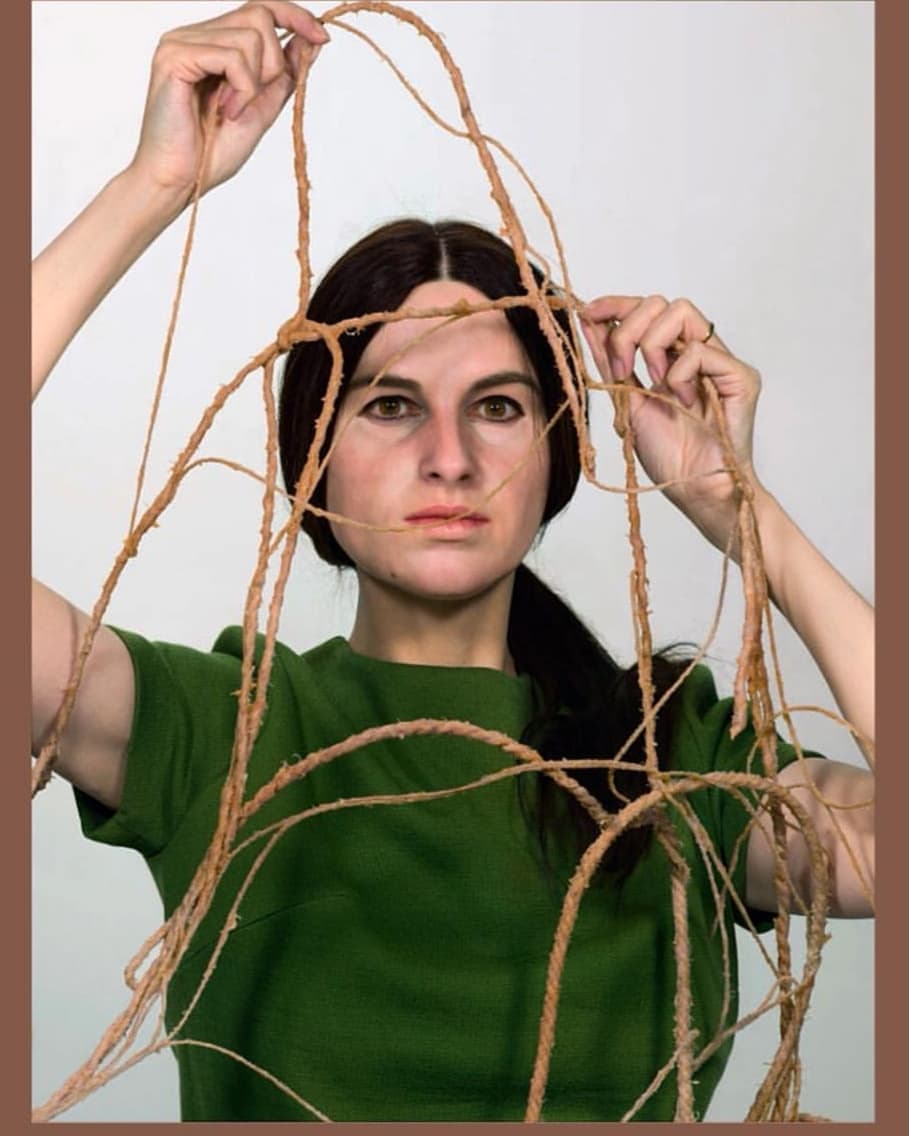
Gillian Wearing
Me as Eva Hesse
Throughout the past two decades, Gillian Wearing’s films, photographs and sculptures have investigated public personas and private lives. Since the beginning of her career, the artist has drawn from techniques of theater, reality television and fly-on-the-wall documentary-making to construct narratives that explore personal fantasies and confessions, individual traumas, cultural histories, and the role of the media. Anonymity through elaborate masks, costumes and role-play has remained a critical part of Wearing’s practice and influential investigation of the ways in which individuals present themselves to others when the self is temporarily concealed.

ELENE USDIN
Elene usdin is a paris based artist who works primarily in photography. she is part of the creative collective heartland villa that also includes art directors lionel avignon and stefan de vivies. usdin’s work is very diverse and includes work for commercial clients, fashion publications and herself. many of her pieces are seemingly candid often featuring the artist herself as the subject. she also integrates lots of props and masks into her works giving them a surreal touch.

Jessica Eaton
ジェシカ·イートン
杰西卡·伊顿
polytopes
Jessica Eaton’s photographs dissect chemical and optical phenomena, the materiality of film, and the language of light itself. Eaton came to international acclaim through her Cubes for Albers and LeWitt (commonly referred to by the acronym cfaal)—a series of vibrant photographs that deconstruct her studio practice. Like the majority of Eaton’s works, these optically charged images are made by taking multiple in-camera exposures of common studio supplies. Through her abundant use of traditional analog photography practices—such as colour-separation filtering and in-camera masking—Eaton imbues her large-format images with an aesthetic more reminiscent of the paintings and drawings of hard-edge geometric abstraction than the photographs of traditional studio work.

joan jonas
Джоан Джонас
جوان جوناس
조안 조나스
ジョーン・ジョナス
Joan Jonas, believing that sculpture and painting were exhausted mediums, became known for her pioneering work in performance and video art. Jonas, who studied sculpture and art history, was deeply influenced by the work of Trisha Brown, with whom she studied dance, as well as John Cage and Claes Oldenburg, particular in their exploration of non-linear narrative structure and form. Jonas’s own work has frequently engaged and questioned portrayals of female identity in theatric and self-reflexive ways, using ritual-like gestures, masks, mirrors, and costumes.

OMER POLAK
Self portrait with white odor
I started the project as a personal research in odor. At the beginning I tried to experience the world through smells and without them, tried to learn my own smell through designated mask. I “Recorded” Smells in primitive ways and spread them artificially. Then I tried to neutralize my sense of smell by using blurring “White odor” as if I was an anosmic for one day. I created conceptual models for an instrument that would “increase odor”, and for an instrument that will allow you to smell danger/diseases

IVONNE THEIN
ИВОНН ТЕЙН
DIE MASKERADE DES REALEN
The work “The Masquerade of the Real“ deals with theperception of the human body in the digital age. As a two-dimensional image the body loses its organic function and becomes a empty covering.
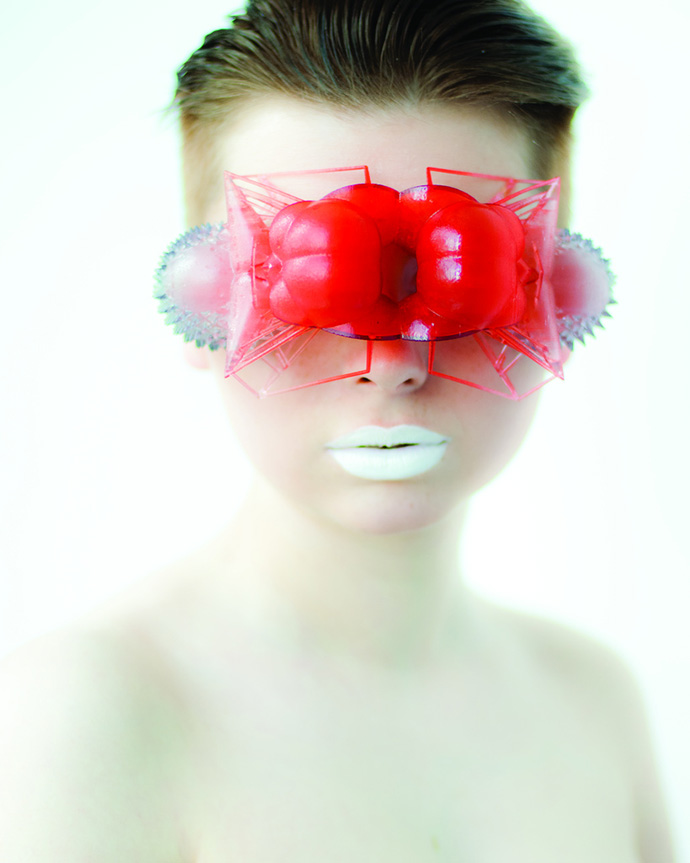
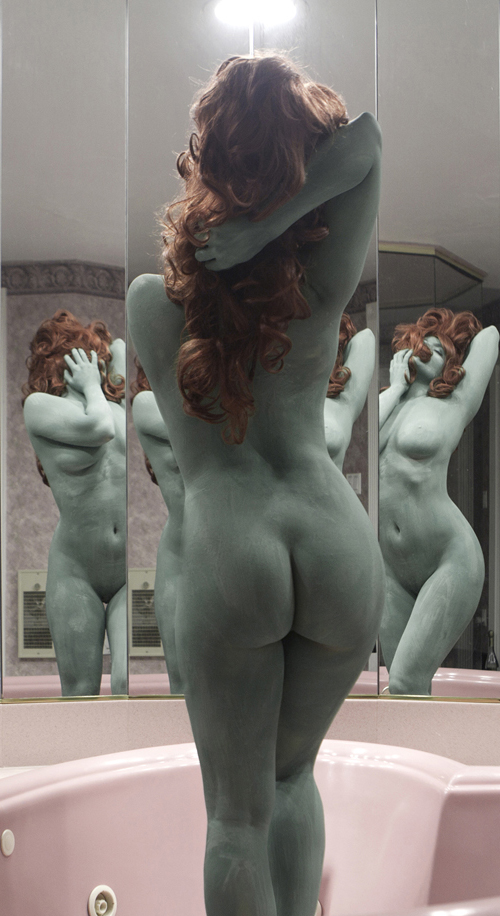

Jan Martens
THE DOG DAYS ARE OVER
THE DOG DAYS ARE OVER will be a work that tries to reveal the person behind the dancer. To reach this, a very complex, mathematical, dynamic and tiring choreography is constructed, which is performed almost completely in unison. The difficulty degree of the choreography is so high, that the dancers eventually will go wrong. It is there where the mask falls. The dancer is defined as an idle and purely executing species, striving for perfection.
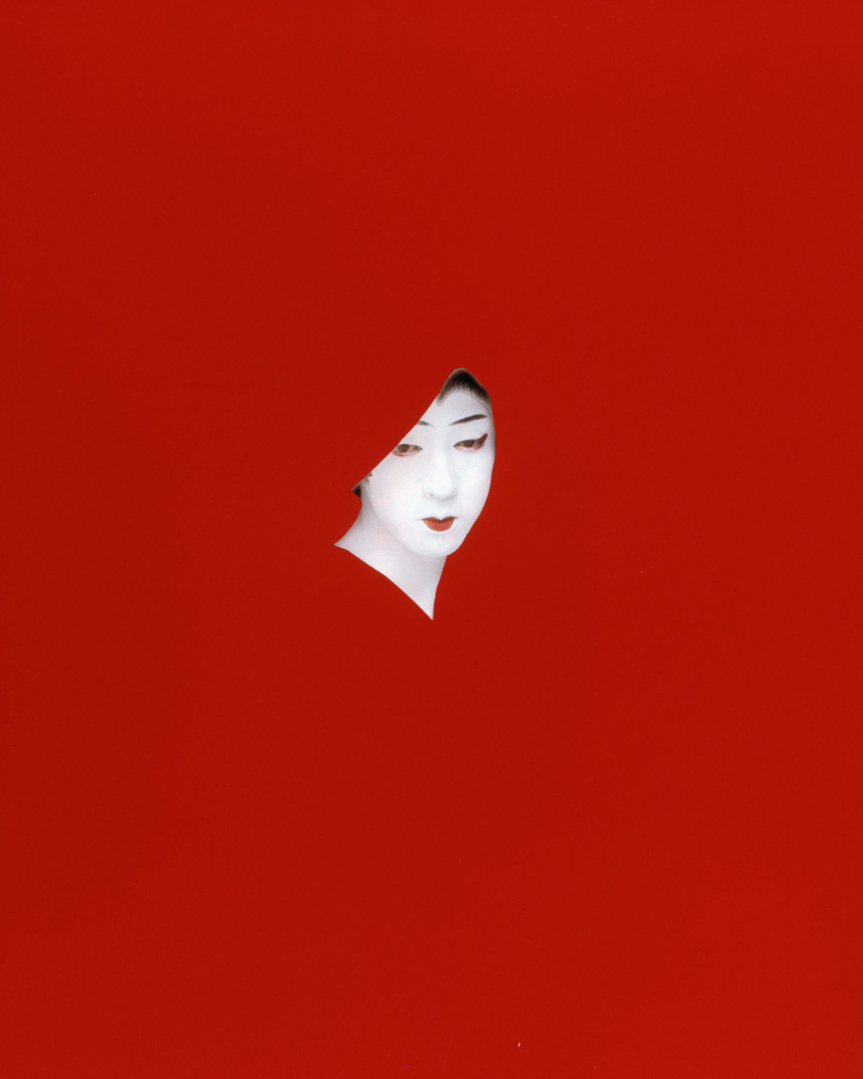
SARAH CHARLESWORTH
Red Mask
Sarah Charlesworth was a conceptual artist and photographer whose work sought to bridge the gap between fine art and a critical practice of photography. Trained as a painter and introduced to conceptual art in college, Charlesworth developed a deeper interest in photography and its ability to deconstruct our shared symbols and public imagery in ways that articulate and question the values and beliefs of our culture.
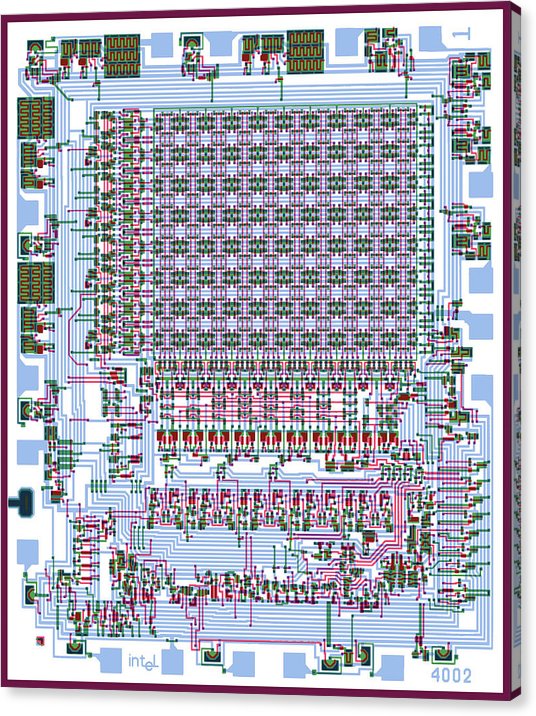
kathy ansel
integrated circuit mask
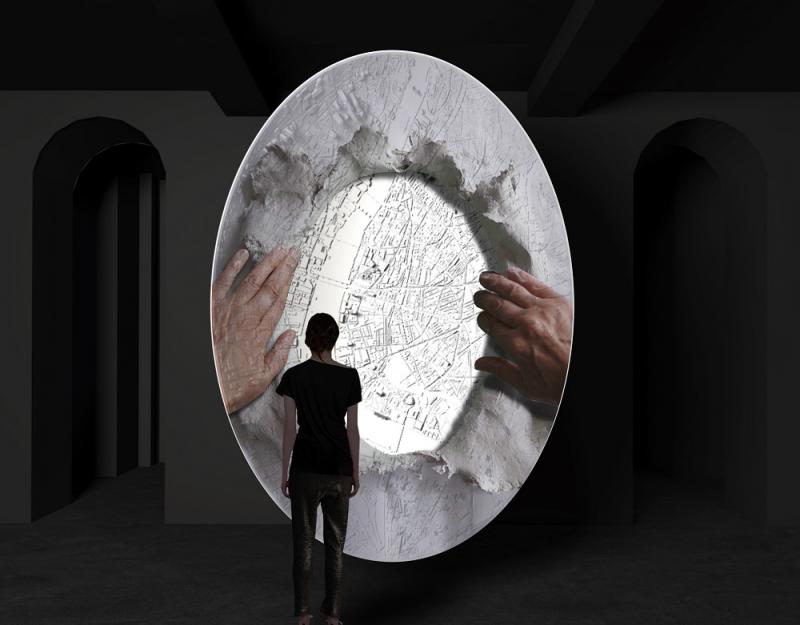

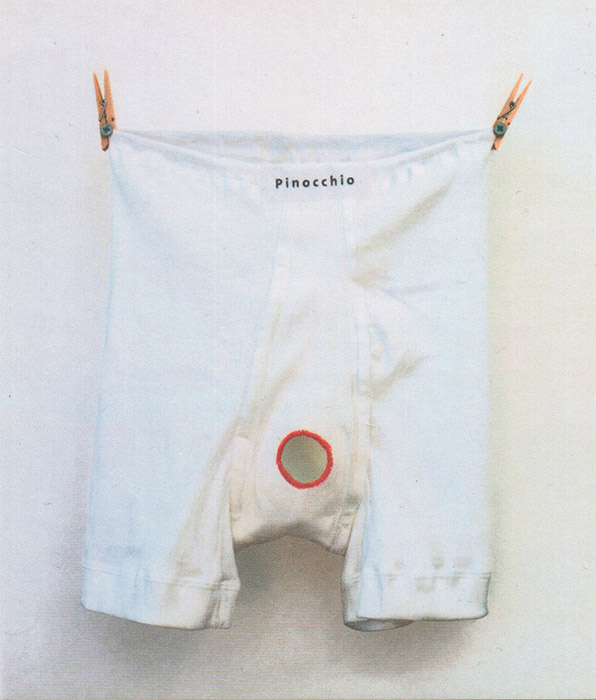
Werner Reiterer
The Mask of Pinocchio/Underpants with a hole
Werner Reiterer’s works walk a fine line between sense and nonsense, exploiting art’s close proximity to life as a means of challenging literal descriptions of reality. In a manner that blurs the boundaries of art and humor, his richly engaging sculptures ask us to participate in their realization while his drawings disturb our expectations of the ordinary in imaginings of absurd proportion. And by scrambling the relationship of images and language he is able to turn our perceptions upside down and, in ways that are both entertaining and illuminating, reassert the power of art to change our lives.

Lee Griggs
cgi masks
Madrid-based 3D artist Lee Griggs created some fascinating topographical illustrations using 3D animation and rendering software Maya Xgen and Arnold. Each piece is comprised of countless >spheres, cylinders, or cubes that have been extruded and colored to create images reminiscent of ocean floors, bacterial growth, or even weather patterns.

guillaume mazars
ambient light
Project for a kiosk on the lakefront of Chicago. Waterfronts are special places. A meeting point between earth and sea, the horizon is exposed. More than elsewhere the sky is present, it illuminates and color permeates the place. The project aims to exacerbate this feeling by framing the views and accentuating the light of the moment.A translucent fabric filter diffuses the light, revealing the average color of the sky. This veil delimits the space and generates privacy. The fabric masks some of the context to better reveal its brightness. Inside a suspended fabric ring provides shade. The center of the roof is open to expose the sky. All you can see and connect with is the horizon and the sky.

zach blas
Facial Weaponization Suite
Die Facial Weaponization Suite protestiert gegen die biometrische Gesichtserkennung – und die Ungleichheiten, die diese Technologien verbreiten -, indem sie in Community-basierten Workshops „kollektive Masken“ erstellt, die aus den aggregierten Gesichtsdaten der Teilnehmer modelliert werden. Dies führt zu amorphen Masken, die von Menschen nicht als menschliche Gesichter erkannt werden können biometrische Gesichtserkennungstechnologien. Die Masken werden für öffentliche Interventionen und Aufführungen verwendet. Eine Maske, die Fag-Gesichtsmaske, die aus den biometrischen Gesichtsdaten vieler queerer Männergesichter generiert wird, ist eine Antwort auf wissenschaftliche Studien, die die Bestimmung der sexuellen Orientierung durch schnelle Gesichtserkennungstechniken verbinden. Eine andere Maske untersucht eine dreigliedrige Vorstellung von Schwärze, die zwischen biometrischem Rassismus (der Unfähigkeit biometrischer Technologien, dunkle Haut zu erkennen), der Bevorzugung von Schwarz in der militanten Ästhetik und Schwarz als dem, was informell verschleiert, aufgeteilt ist. Eine dritte Maske befasst sich mit den Beziehungen des Feminismus zu Verschleierung und Unmerklichkeit und betrachtet die jüngste Schleiergesetzgebung in Frankreich als einen beunruhigenden Ort, der Sichtbarkeit zu einer unterdrückenden Kontrolllogik macht. Eine vierte Maske greift den Einsatz von Biometrie als Grenzsicherungstechnologie an der mexikanisch-amerikanischen Grenze und die daraus resultierende Gewalt und den damit verbundenen Nationalismus auf. Diese Masken überschneiden sich mit der Verwendung von Maskierung durch soziale Bewegungen als undurchsichtiges Werkzeug der kollektiven Transformation, das dominante Formen politischer Repräsentation ablehnt.

WIM VANDEKEYBUS & ULTIMA VEZ
MENSKE
Even the standing room only tickets have sold out, and the raging mass of disappointed kids looks like they may start a riot: the atmosphere before Ultima Vez’s performance is akin to a rock concert. Choreographer superstar Wim Vandekeybus’s company has toured the world with their trademark vocabulary of acrobatic, extreme, often violent movement, soaked in multimedia and energetic music. Menske (meaning approximately ‘little human’), their latest work, has all the typical flaws and qualities of classic Vandekeybus. On the conservative end of political intervention, Menske is an explosive concoction of brash statements about the state of the world today, a sequence of rapidly revolving scenes of conflicting logic: intimist, blockbuster, desperate, hysterical. The broad impression is not so much of a sociological portrait, but of a very personal anguish being exorcised right in front of us, as if Vandekeybus is constantly switching format in search of eloquence. Visually, it is stunning, filmic: a slum society falling apart through guerrilla warfare, in which girls handily assume the role of living, moving weapons. A woman descends into madness in an oneiric hospital, led by a costumed and masked group sharpening knives in rhythmic unison. A traumatised figure wanders the city ruins dictating a lamenting letter to invisible ‘Pablo.’ Men hoist a woman on a pole her whole body flapping like a flag. “It’s too much!” intrudes a stage hand, “Too much smoke, too much noise, too much everything!” And the scene responsively changes to a quiet soliloquy. At which point, however, does pure mimesis become complicit with the physical and psychological violence it strives to condemn? Unable to find its way out of visual shock, Menske never resolves into anything more than a loud admission of powerlessness.

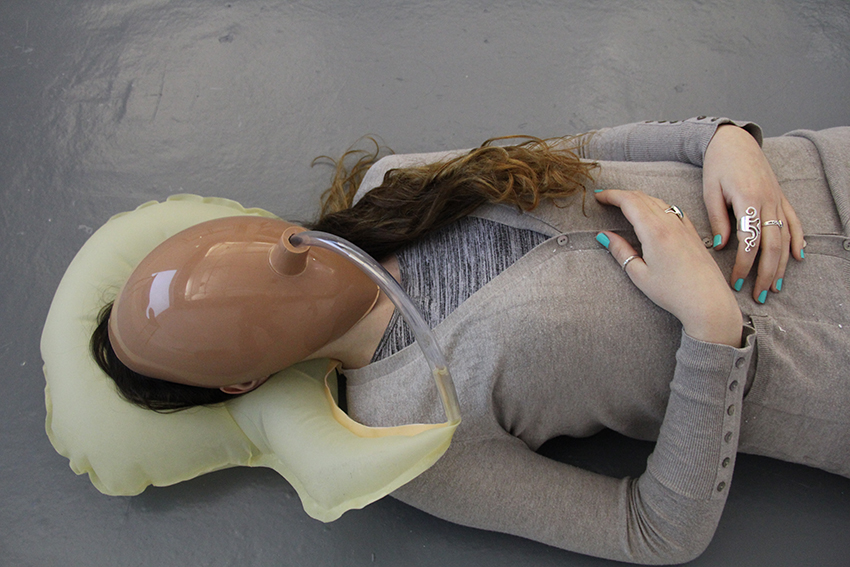
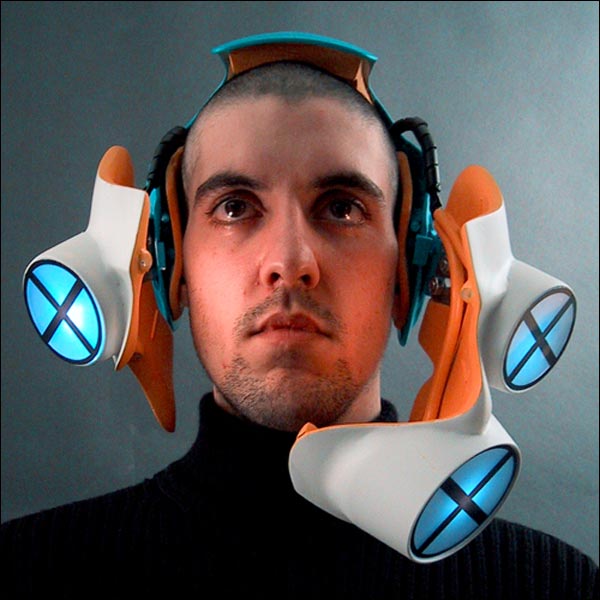
Jackson Hong
Citizen X Mask

Gillian Wearing
Self-Portrait at Three Years Old
In den letzten zwei Jahrzehnten haben Gillian Wearings Filme, Fotografien und Skulpturen öffentliche Persönlichkeiten und das Privatleben untersucht. Seit Beginn ihrer Karriere hat die Künstlerin Theatertechniken, Reality-Fernsehen und Fly-on-the-Wall-Dokumentarfilme verwendet, um Erzählungen zu konstruieren, die persönliche Fantasien und Geständnisse, individuelle Traumata, Kulturgeschichten und die Rolle der Medien. Die Anonymität durch aufwändige Masken, Kostüme und Rollenspiele ist nach wie vor ein kritischer Bestandteil von Wearings Praxis und einflussreicher Untersuchung der Art und Weise, wie sich Individuen anderen präsentieren, wenn das Selbst vorübergehend verborgen ist.

